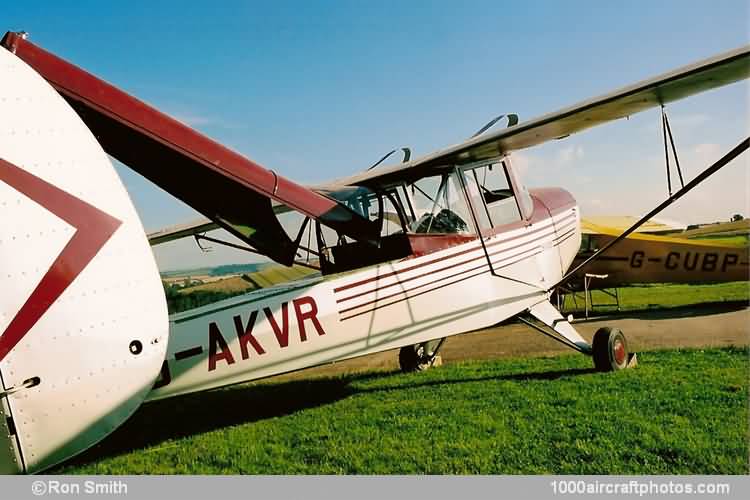04/30/2011. Remarks by Ron Smith: "Chrislea Aircraft Co. Ltd. was registered at London, UK on October 2, 1936 by R.C. Christophorides and R.V. Leak, the first syllables of their surnames being used to form the company name. The first Chrislea product was the LC1 Airguard (G-AFIN c/n LC1), which was built at Heston. The Airguard was a Mikron-powered low-wing two-seat cabin monoplane, which flew in the late summer of 1938. The Airguard somewhat resembled the Tipsy Belfair, although lacking the latter's elliptical wing planform.
The CH3 Series 1 Ace (G-AHLG c/n 100) first flew at Heston in early September 1946. This four-seat high-wing monoplane was characterized by its fixed tricycle landing gear and (after initial flying with a single fin) twin fins. Most notably, the Ace also featured a novel control system in which there was no rudder bar, all controls being provided by a steering wheel control mounted from the dashboard. A universal joint at the base of the 'steering column' allowed control inputs to be provided in all axes. Pitch control required vertical translation of the wheel, side-to-side motion-controlled yaw and steering wheel-like rotation generated roll. A floor-mounted foot throttle was provided as well as a normal hand throttle.
Perhaps not surprisingly, there was muted enthusiasm for this degree of novelty and a conventional rudder bar was fitted on production aircraft. Designated CH3 Series 2 Super Ace, these were built at Exeter, Devon, where to Chrislea Aircraft moved in April 1947, enforced by the closure of Heston Airport. The prototype (G-AKFD c/n 101) was flown in February 1948, with an 145 hp de Havilland Gipsy Major 10 engine replacing the 125 hp Lycoming O-290-3 of the original Ace. It initially retained the unconventional controls of the Ace, but by mid-October 1948 it (and all production aircraft) was modified to fit conventional rudder controls.
The CH3 Series 3 Super Ace was a direct military development for army observations, ambulance and liaison duties, with a tail wheel landing gear, broader tail fins and a lengthened cabin. This version did not come to fruition, but production was initiated for five examples of a luxury civil version designated CH3 Series 4 Skyjeep. Eventually three were finished, these had an 155 hp Blackburn Cirrus Major 3 engine, and featured a removable rear fuselage top decking for easy loading. The first example (G-AKVS c/n 126) first flew on November 21, 1949.
Chrislea Aircraft ceased production In 1952 and its assets were acquired by C.E. Harper Aircraft, including seven Super Ace and two Skyjeep aircraft in various stages of completion. Unsold, these were scrapped in 1959, hence the CH3 aircraft that eventually were sold comprised one Series 1 Ace, eighteen Series 2 Super Aces, and three Series 4 Skyjeeps.
Although all but the first three aircraft were registered on March 8, 1948, the pictured G-AKVR was built in 1951. It was deregistered April 27, 1951 as it was sold to Australia where it was registered VH-BRP. By 1957 it was reregistered VH-RCD, while later it was reregistered again as VH-OLD. The aircraft returned on the British register again as G-AKVR on October 27, 1998 and has since changed hands three times. Its present owner, Richard Webber of Chulmleigh, has refurbished the aircraft."
